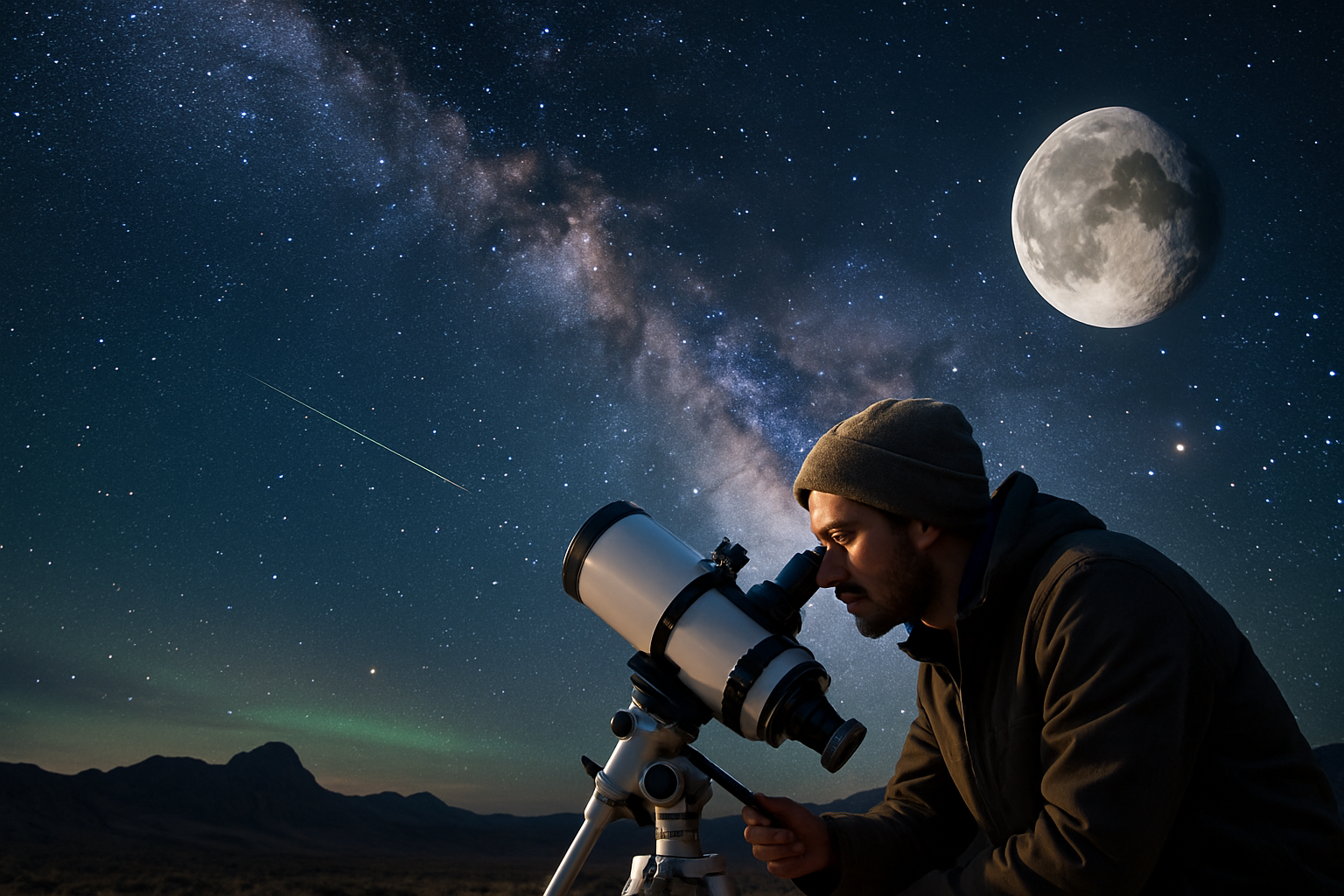Exploring the World of Astro-Tourism: Stargazing Adventures for Modern Travelers
The night sky has captivated humans for millennia, inspiring myths, guiding explorers, and fueling scientific discovery. Today, a new breed of traveler is seeking out dark skies and celestial wonders, giving rise to the phenomenon of astro-tourism. This cosmic trend combines the allure of space exploration with the thrill of adventure travel, offering unique experiences for those who dare to look up and dream.

The concept of astro-tourism isn’t entirely new. Ancient civilizations built structures like Stonehenge and the pyramids with astronomical alignments in mind. However, the modern incarnation of astro-tourism combines advanced technology, scientific knowledge, and a renewed appreciation for natural darkness.
Dark Sky Destinations
As light pollution increases in urban areas, pristine dark sky locations have become increasingly rare and valuable. Several organizations, including the International Dark-Sky Association (IDA), work to identify and protect these areas. Dark sky parks, reserves, and sanctuaries are now scattered across the globe, offering travelers the chance to witness the cosmos in all its glory.
Some notable dark sky destinations include:
-
NamibRand Nature Reserve, Namibia
-
Aoraki Mackenzie International Dark Sky Reserve, New Zealand
-
Natural Bridges National Monument, Utah, USA
-
Galloway Forest Park, Scotland
These locations not only offer exceptional stargazing opportunities but also educate visitors about the importance of preserving natural darkness for wildlife, human health, and astronomical research.
The Astro-Tourism Experience
Astro-tourism experiences can vary widely, catering to different interests and skill levels. For beginners, guided stargazing tours offer an introduction to constellations, planets, and basic astronomy concepts. These tours often use powerful telescopes and laser pointers to help visitors navigate the night sky.
More advanced enthusiasts might opt for astrophotography workshops, where they can learn to capture stunning images of the Milky Way, star trails, and celestial events. Some destinations offer multi-day astronomy camps, combining daytime activities with nighttime observations.
For those seeking a truly immersive experience, astro-lodges and hotels are emerging as a new hospitality trend. These accommodations feature specially designed rooms with retractable or glass roofs, allowing guests to stargaze from the comfort of their beds.
The Science Behind the Stars
Astro-tourism isn’t just about pretty views; it’s also an opportunity for citizen science and education. Many dark sky destinations partner with research institutions to offer programs where visitors can contribute to real astronomical research.
For example, the Globe at Night program encourages people worldwide to measure and report on light pollution in their area. This data helps scientists track changes in global light pollution and its effects on wildlife and human health.
Additionally, astro-tourism can spark interest in STEM fields, particularly among young people. Seeing the wonders of the universe firsthand can inspire the next generation of astronomers, astrophysicists, and space explorers.
The Future of Cosmic Travel
As technology advances and space exploration becomes more accessible, the future of astro-tourism looks bright. Several companies are already developing plans for space tourism, promising to take civilians on suborbital flights or even to the International Space Station.
While space travel remains out of reach for most, virtual reality (VR) and augmented reality (AR) technologies are bringing the cosmos closer to Earth. Some observatories and planetariums now offer VR experiences that allow visitors to “walk” on Mars or float through nebulae.
Looking ahead, astro-tourism may play a crucial role in raising awareness about light pollution and its environmental impacts. As more people experience the beauty of truly dark skies, there’s hope for increased support for dark sky conservation efforts worldwide.
Celestial Travel Tips
-
Plan your trip around the lunar cycle; new moons offer the darkest skies for stargazing
-
Bring warm layers, even in summer; temperatures can drop significantly at night
-
Allow at least 20 minutes for your eyes to fully adjust to the darkness
-
Use a red light flashlight to preserve your night vision
-
Download a star chart app to help identify constellations and planets
-
Consider joining an astronomy club for access to expert knowledge and equipment
As we continue to explore our planet, astro-tourism offers a unique perspective that reminds us of our place in the vast cosmos. By turning our gaze upward, we not only discover the wonders of the universe but also gain a deeper appreciation for the fragile beauty of our own world. Whether you’re a seasoned astronomer or a curious novice, the stars are calling – and the adventure of a lifetime awaits.





